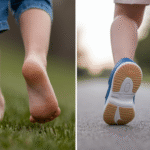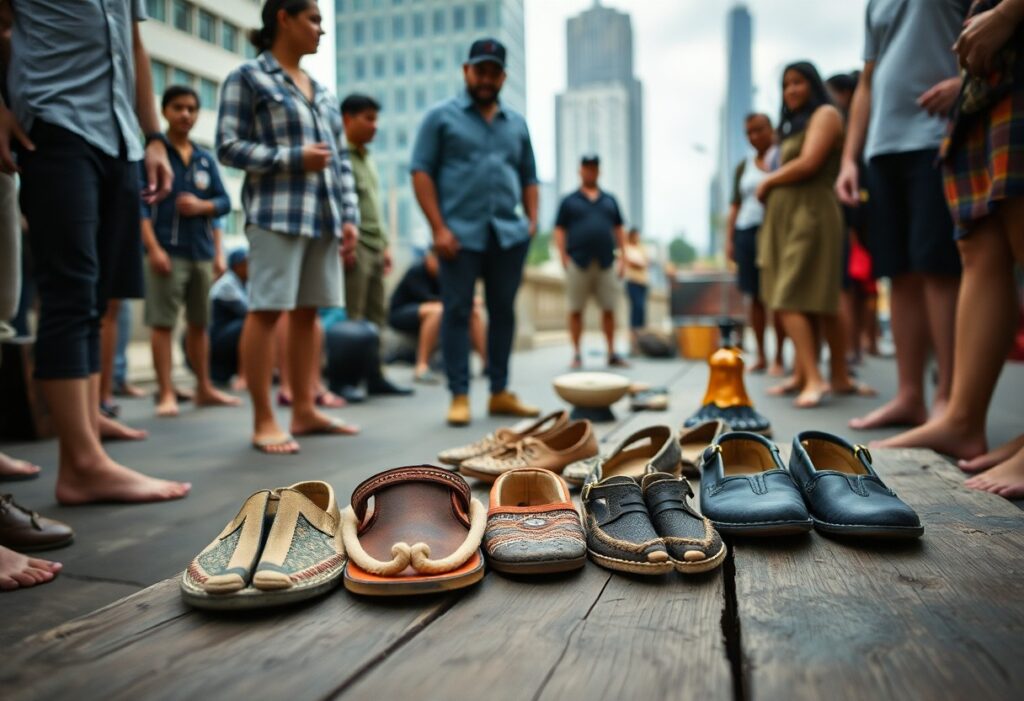
Diving into the realm of barefoot footwear through the fascinating perspective of cultural anthropology reveals captivating stories that link the profound traditions of Aboriginal cultures with the contemporary urban environment. As you explore this compelling transformation, you will discover how cultural values and practices surrounding minimalist footwear influence our perceptions of comfort, our relationship with the earth, and our avenues for self-expression. Gaining insight into these themes not only broadens your understanding but also encourages a reassessment of how your footwear choices can reflect deeper cultural significance and personal identity.
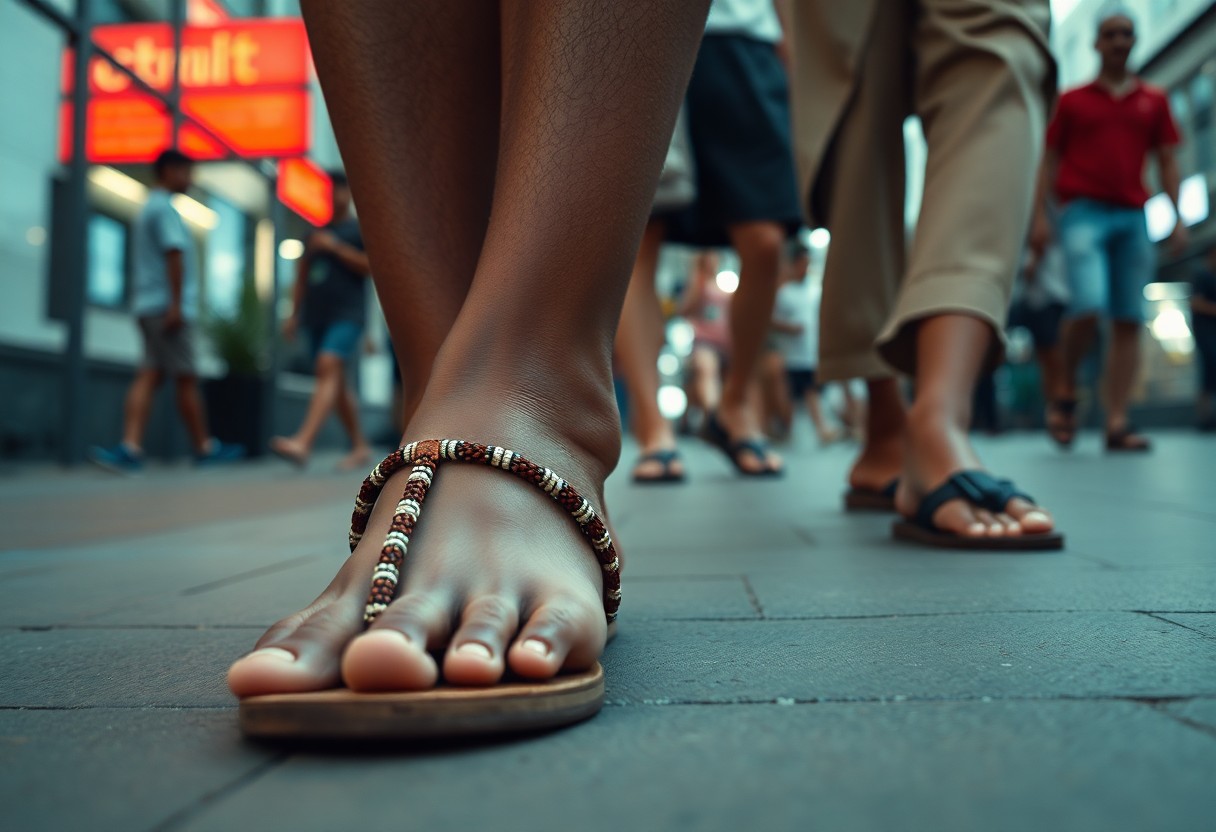
Linking Historical Footwear Traditions with Modern Design Innovations
The contemporary footwear market showcases a vibrant blend of ancient traditions and modern innovations, fostering a growing appreciation for barefoot footwear. This journey honors traditional indigenous techniques while adapting them to fit your modern lifestyle seamlessly. By recognizing the value of historical practices, you can uncover an exciting fusion of cultural respect and practical aesthetics in your everyday footwear choices, enriching your personal style while paying homage to the past.
Analyzing Indigenous Methodologies of Foot Conditioning Compared to Modern Practices
Across various indigenous cultures, unique foot conditioning techniques have been employed to enhance foot strength for navigating diverse terrains. Methods such as walking barefoot over various surfaces have helped fortify the arches and muscles in ways that many contemporary interpretations fail to replicate effectively. While you may encounter minimalist footwear designed to imitate these benefits, they seldom provide the authentic experience of genuine contact with the earth, which is crucial for fostering natural foot strength and flexibility.
Tracing the Evolution of Military Footwear: From Ancient Caligae to Contemporary Tactical Boots
The evolution of military footwear presents a captivating story of adaptation and innovation, transitioning from the robust Roman caligae, designed for durability and traction, to modern tactical boots that blend protection, agility, and comfort. An analysis of these transitions uncovers a consistent principle: in challenging environments, functionality is paramount, necessitating footwear that enhances endurance and mobility for soldiers.
The Roman caligae exemplified a sophisticated response to military demands, crafted from strong leather and featuring an open-toe design for breathability. This ancient footwear boasted thick soles that effectively cushioned impacts and provided essential traction, vital in combat situations. Today, tactical boots are constructed with advanced materials such as Kevlar and waterproof membranes to enhance durability and performance. These contemporary designs incorporate padded collars and state-of-the-art cushioning systems to prevent injuries during demanding military operations. By appreciating the legacy of military footwear, you can observe how these historical styles have paved the way for modern innovations, blending heritage, practicality, and cutting-edge technology to meet the needs of today’s military personnel.
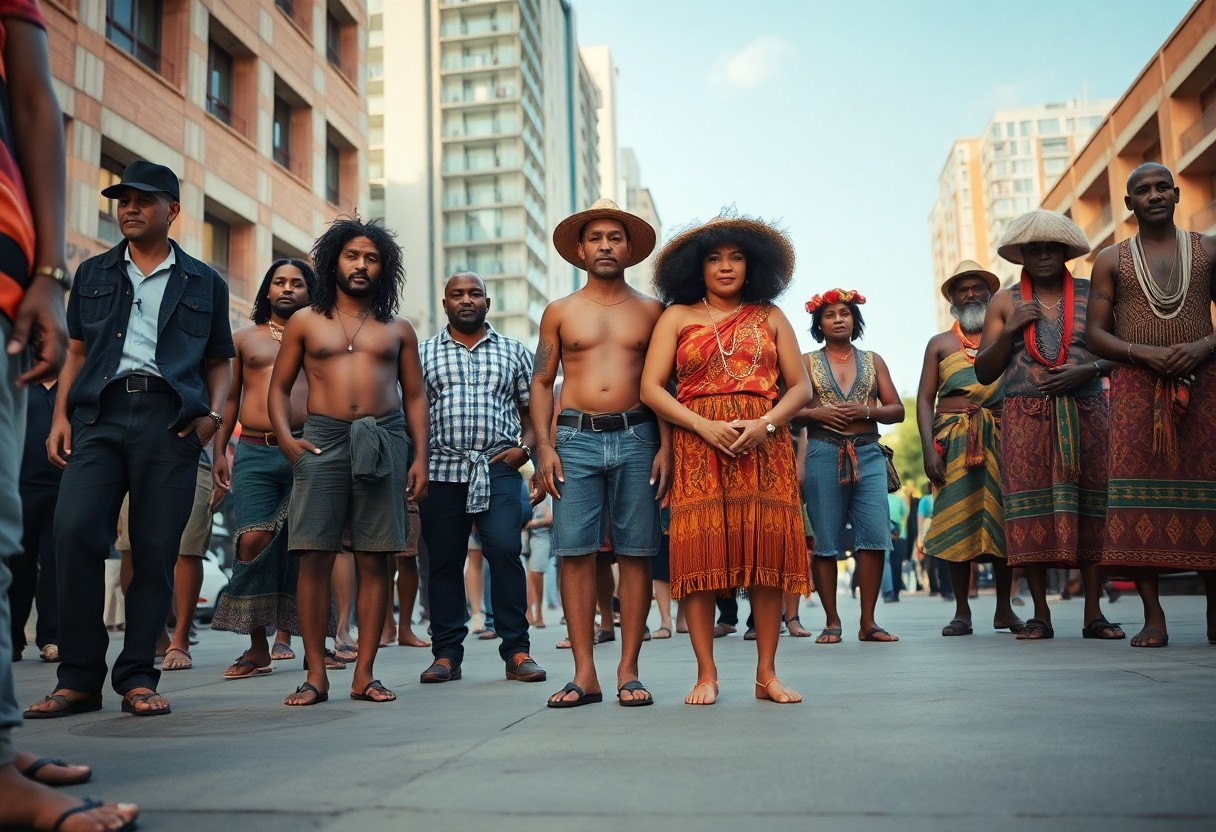
Examining the Footwear Discrepancy Between Urban and Rural Settings
The variations in footwear choices between urban and rural areas highlight profound cultural and practical differences. Urban locales often prioritize style and brand identity, whereas rural settings may focus more on practicality and durability. As barefoot footwear rises in popularity, urban dwellers increasingly adopt its minimalist design both as a fashion statement and as a means to achieve perceived health benefits. In contrast, individuals residing in rural regions may remain hesitant, influenced by traditional norms and the practical requirements of their environments.
Identifying Urban Trends in the Adoption of Barefoot Footwear
In metropolitan areas, a noticeable trend toward the acceptance of barefoot footwear is emerging, with adoption rates experiencing steady growth over the past decade. This shift is fueled by several factors, including a heightened awareness of health, an increasing interest in natural movement, and the impact of fitness trends such as yoga and running. Surveys indicate that approximately 35% of urban dwellers have actively sought out barefoot-style shoes, signaling a cultural transition toward embracing innovative body mechanics.
Investigating Gender-Based Adoption Challenges: Who is Driving the Trend?
The dynamics of gender play a significant role in the acceptance of barefoot footwear, with varying motivations influencing the choices of men and women. Women often face heightened societal pressures concerning fashion and aesthetics, which can impede their willingness to embrace minimalist styles. Conversely, men may be more driven by the performance and health benefits of these shoes, resulting in higher adoption rates among male consumers.
Further exploration into the gendered dimensions of barefoot footwear adoption reveals that societal expectations substantially shape women’s decisions. Women frequently navigate a landscape where ideals of beauty and fashion overshadow practical health advantages. For instance, research shows that approximately 45% of men in urban settings are inclined towards barefoot shoes, compared to only 30% of women. Female consumers often grapple with balancing aesthetics and functionality, making them more cautious as they assess the visual appeal of barefoot footwear against their need for comfort and support. By empowering women through targeted awareness initiatives and showcasing stylish barefoot options, the inclination to embrace this trend could rise, potentially transforming urban footwear narratives and fostering inclusivity across genders.
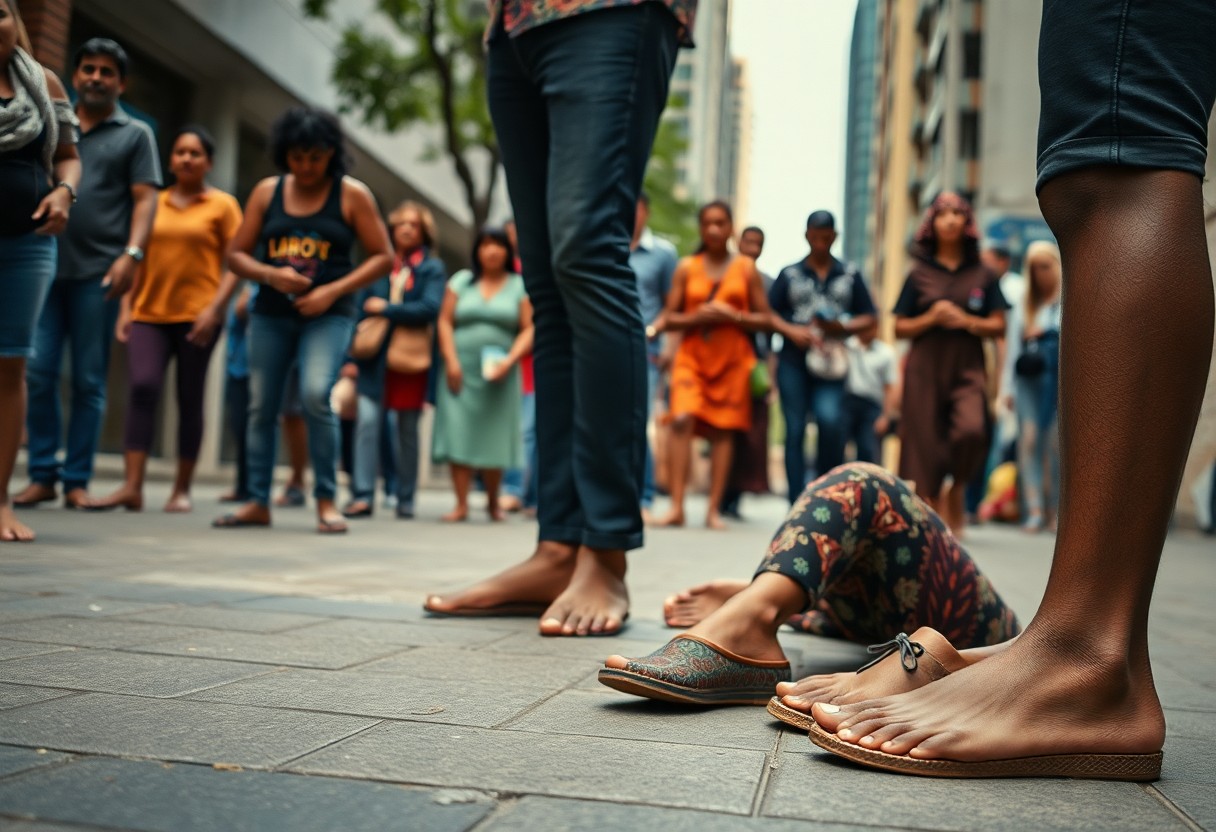
Revolutionary Developments Transforming the Future of Barefoot Footwear
As the demand for barefoot footwear continues to grow, innovative technologies are set to redefine your approach to comfort and performance. Progress in materials science and personalized fitting techniques will not only enhance functionality but also customize your walking experience, merging traditional wisdom with contemporary design principles. You are entering a new era where your footwear can be as unique as the journey it accompanies, leading to unparalleled comfort and performance.
Achieving Customization with 3D Scanning: Creating the Ideal Fit
The emergence of 3D scanning technology is revolutionizing the customization of barefoot footwear, allowing for a precise fit that conforms to your individual foot shape. Instead of settling for generic sizes, your shoes can be meticulously crafted to align with the contours of your feet, significantly enhancing comfort and reducing the risk of injury. Custom-fit options will not only elevate your walking experience but also make barefoot footwear accessible to individuals with a wide range of foot shapes and sizes.
Incorporating Smart Sensors: The Next Frontier in Footwear Technology
The integration of smart sensors into barefoot footwear is poised to change the landscape by embedding technology directly into the soles. These innovative features can monitor various metrics, including distance traveled and foot pressure, providing you with invaluable insights to optimize your walking or running habits. With real-time data at your fingertips, you can fine-tune your activities to enhance performance and ensure your safety.
Imagine having access to real-time analytics while you walk or run. Smart sensors can track your gait, alerting you to any irregularities that may lead to injury. Some forward-thinking brands are already developing footwear capable of analyzing your foot’s impact on different terrains, offering personalized suggestions for style or cushioning adjustments on the go. This groundbreaking integration merges intelligent technology with the fundamental philosophy of barefoot movement, ensuring that you maintain a natural stride while benefiting from the latest advancements in wearable tech. The potential for enhancing sports performance, rehabilitation, and everyday comfort is limitless, fundamentally changing how you interact with your surroundings with every step.
Contemplating the Evolution of Barefoot Footwear
Your investigation into the cultural anthropology surrounding barefoot footwear reveals a rich narrative woven from the threads of Aboriginal traditions to modern urban practices. By embracing the principles of natural movement and a deep connection to the earth, you gain insights into how this footwear philosophy transcends mere fashion, profoundly impacting lifestyle choices and community values. As you reflect on these diverse perspectives, consider how your footwear choices can embody and promote a deeper understanding of cultural heritage and adaptability in today’s dynamic world.
The Article Cultural Anthropology of Barefoot Footwear: From Aboriginal Traditions to Modern Urban Adoption appeared first on My Shoes Finder
The Article Cultural Anthropology of Barefoot Footwear: Traditions to Today Was Found On https://limitsofstrategy.com


